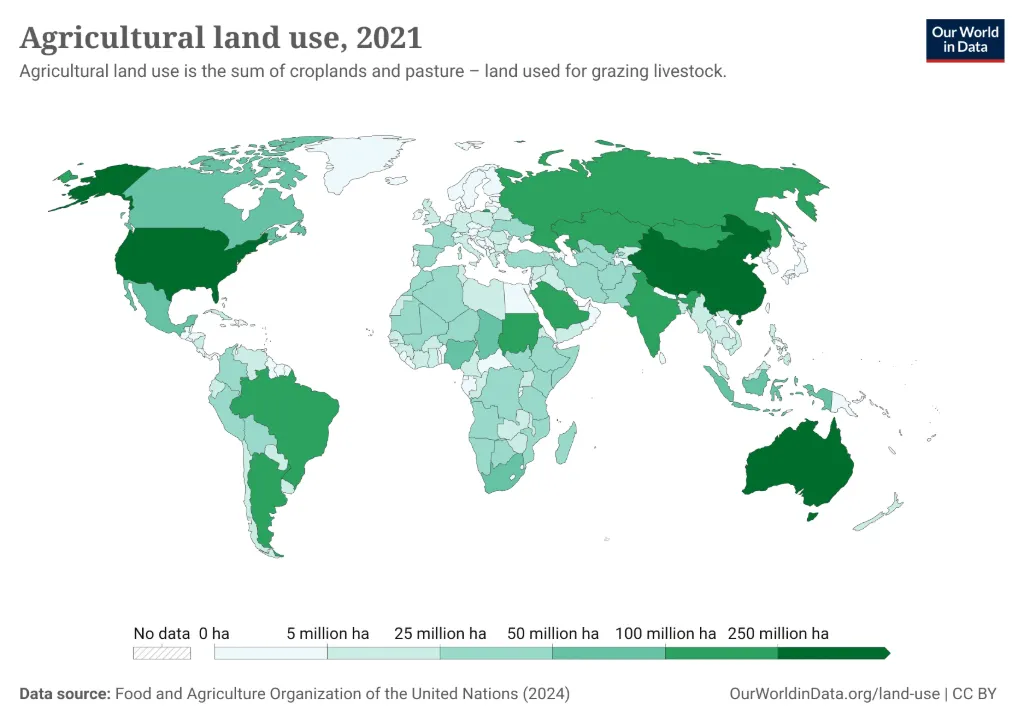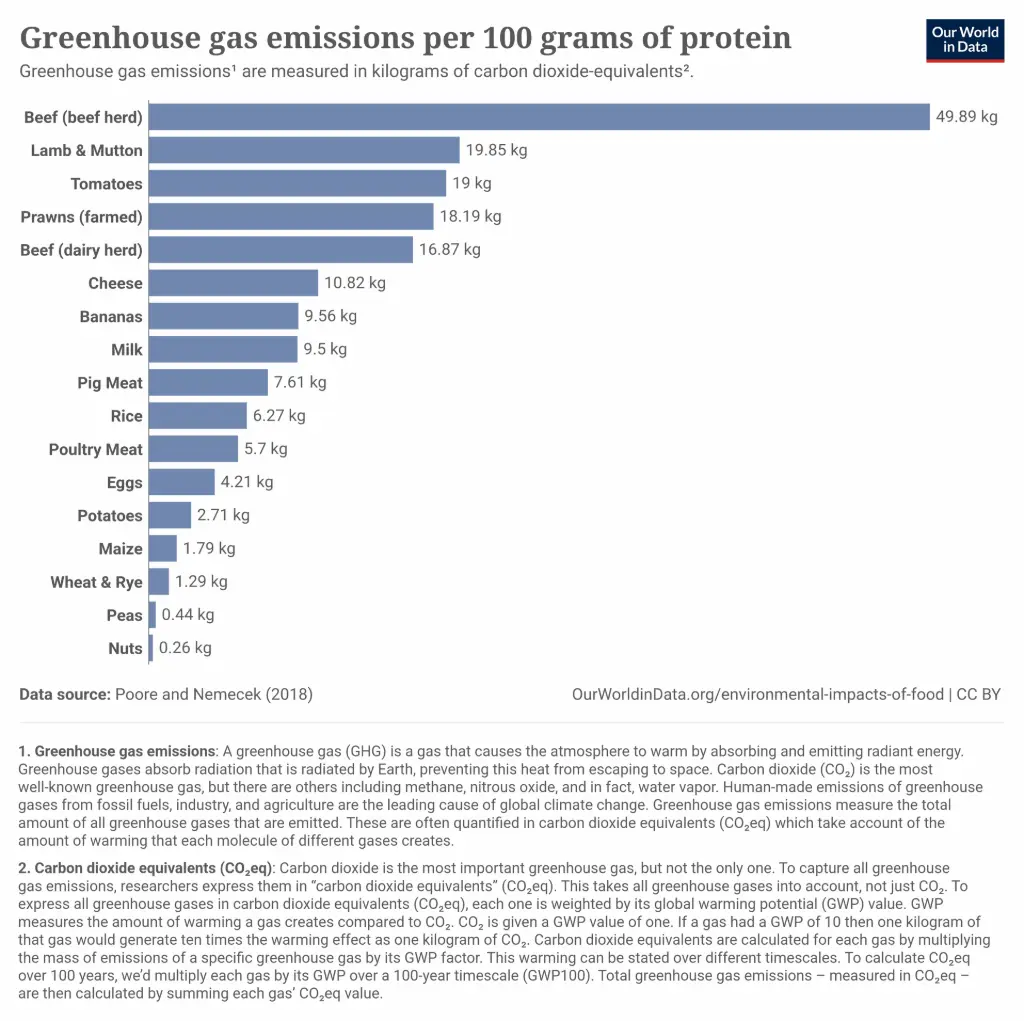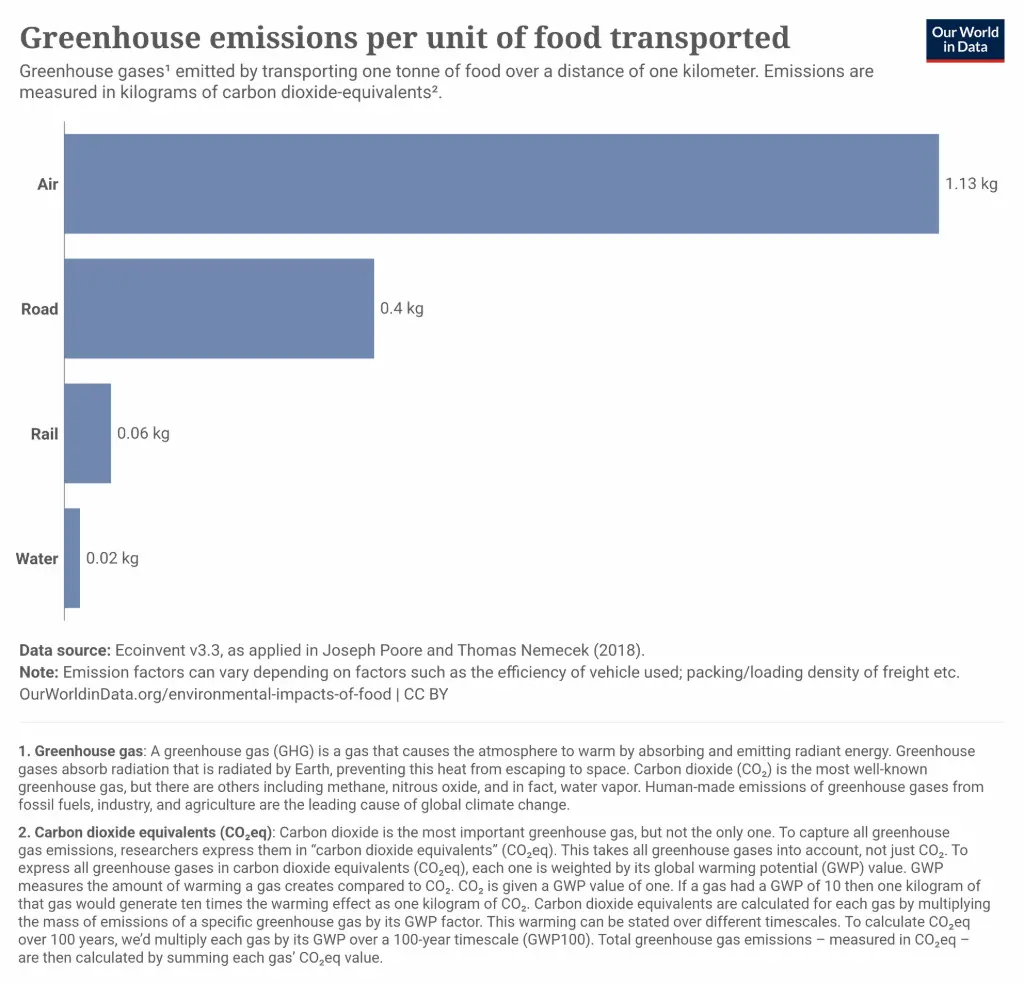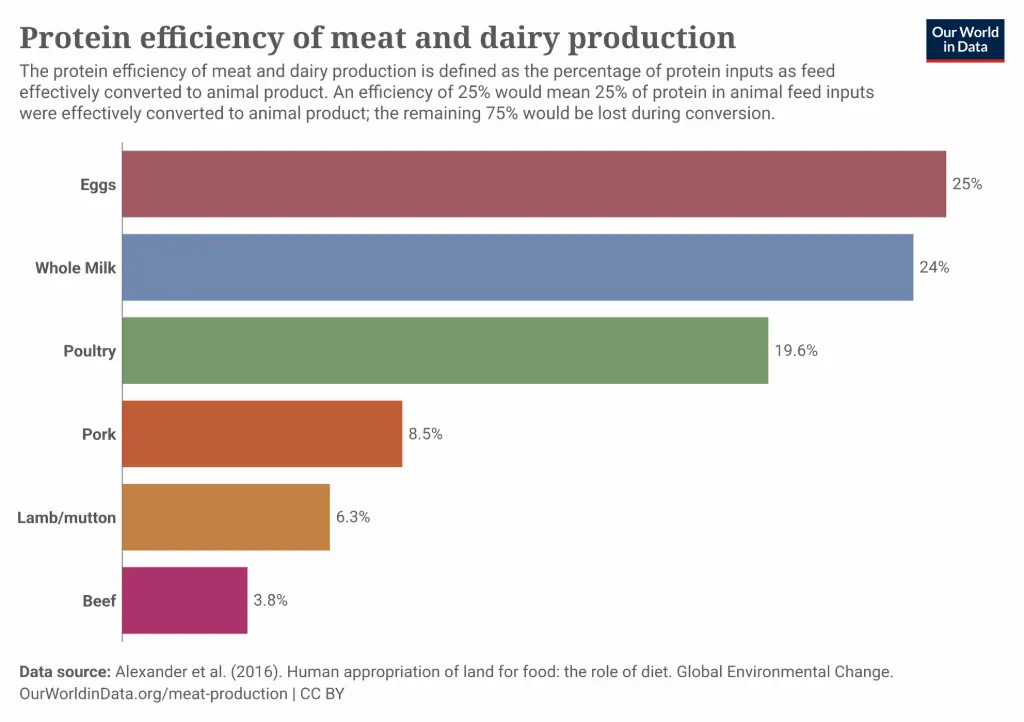Welcome to humanity's most flavorful and complicated challenge: feeding billions without destroying the planet in the process.
The Earth as a Global Farm
Imagine this: about half of all land on the planet that isn’t covered by ice or desert is used for agriculture.
That’s an area the size of the Americas plus China! It’s as if the Earth is one giant farm with a few theme parks scattered here and there.
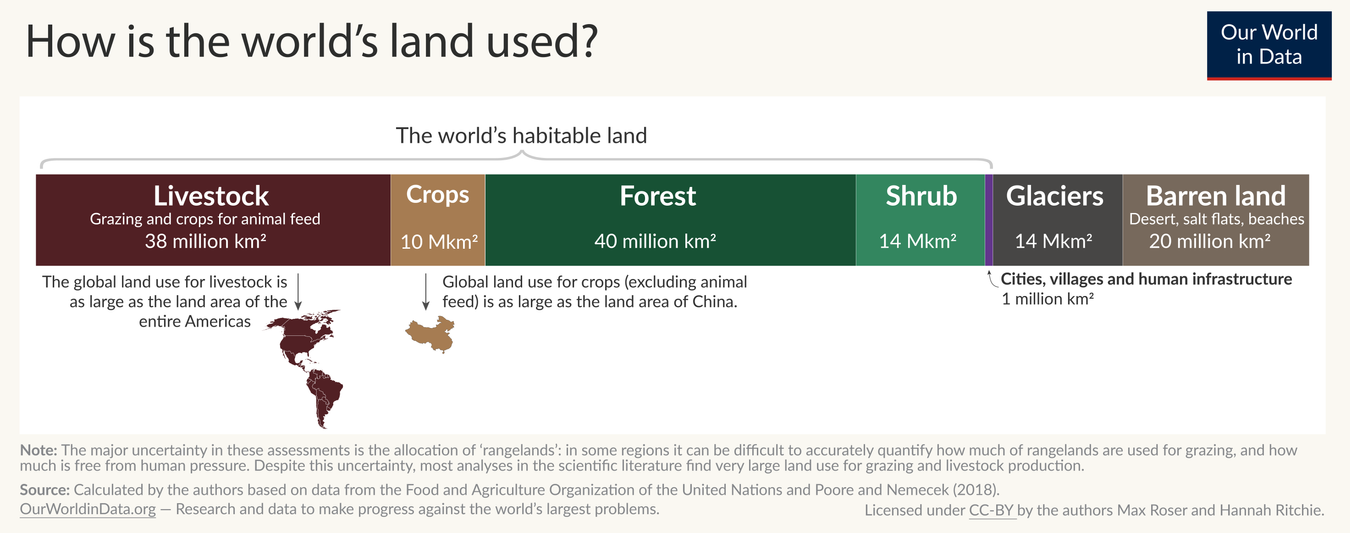
If we decided to raise cattle on pasture alone, we would have to drastically reduce our meat consumption.
In the U.S., for example, meat production would drop by about 70% if it relied solely on grass.
The only way to sustain our high demand for meat is by growing grains and feeding them to cattle.
The Great Food Dilemma
By 2050, there will be nearly 10 billion hungry humans—3 billion more than in 2010!
And it’s not just about quantity. As people get wealthier, they tend to consume more resource-intensive foods like meat and dairy. It’s as if everyone wants their own personal barbecue every day!
But here’s the problem: our current food production is responsible for about 26% of all human-caused greenhouse gas emissions.
That’s more than all cars, planes, and factories combined!
If we keep this up, by 2100, we’ll have used up our entire "carbon budget" just to produce food. This means that even if we stopped all other sources of emissions today, we’d still be in trouble!
Hunger for Change
Some scientists think the number could be even higher. A 2021 study suggests that food systems might account for up to 34% of global emissions.
The difference in numbers comes from how researchers account for the various stages of food production—from planting to when the food reaches your plate (and even what happens to leftovers!).
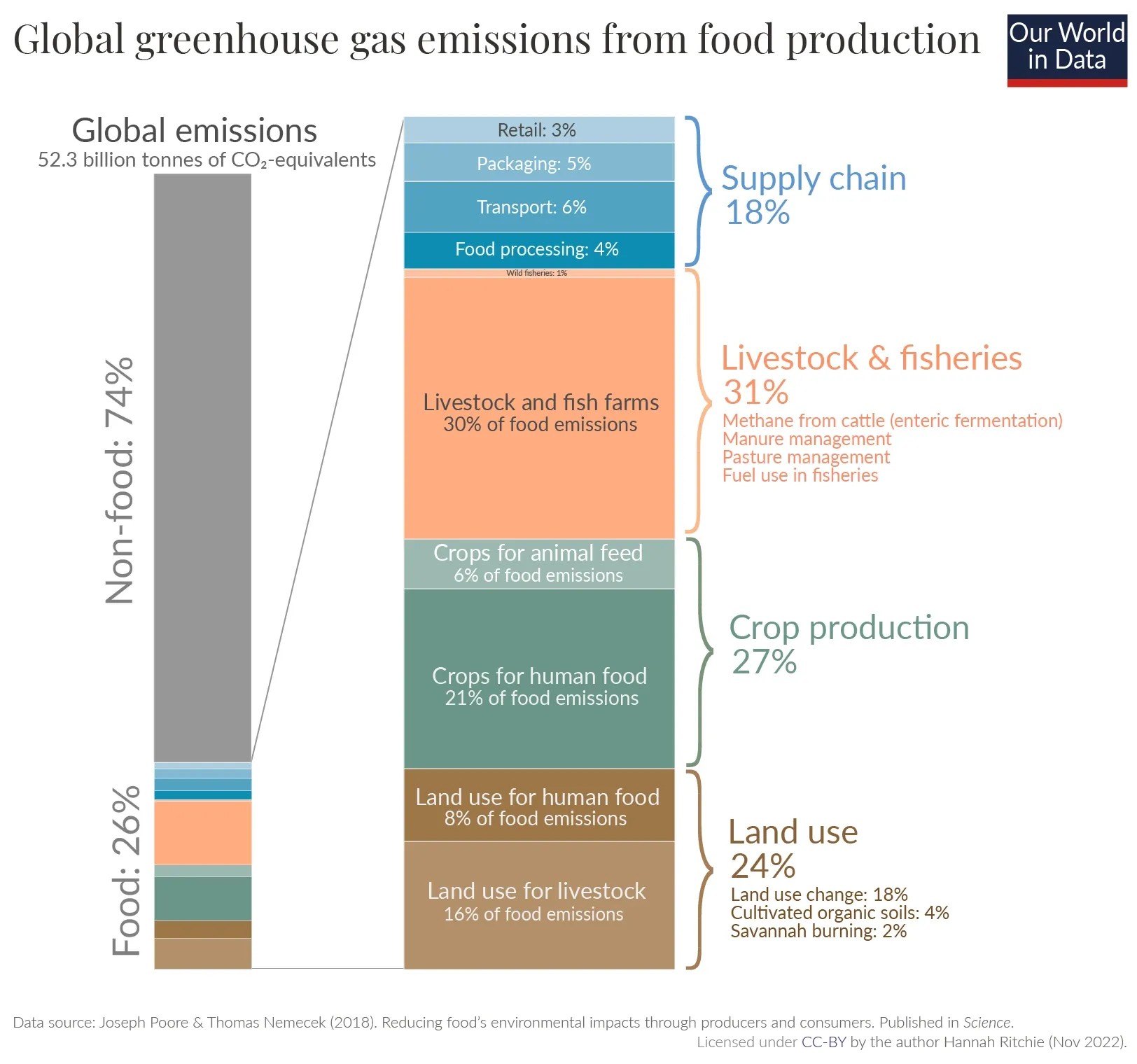
No matter which number we use, one thing is certain: we urgently need to rethink how we produce and consume food.
A Historic Carbon Footprint
Here’s a fact that will make you choke on your sandwich: since agriculture began about 10,000 years ago, we’ve converted 4.8 billion hectares of land into agricultural fields.
Much of this was forest or other carbon-rich ecosystems. This conversion has released about 1,400 billion tons of CO2 into the atmosphere—the equivalent of 40 years of current fossil fuel emissions!
The Carbon Budget: A Race Against Time
Imagine Earth has a carbon credit card. Our limit? 1,405 billion tons of CO2 by 2100. Sounds like a lot, right? Well, it’s not.
If we continue producing food the way we do now, we’ll use up 1,356 billion tons just on food! That leaves only 49 billion tons for, well, everything else.
But don’t panic just yet!
Scientists have found that we can reduce food system emissions by up to 48% if we adopt some key changes by 2050.
The Life Cycle of a Burger
Ever thought about how much CO2 your burger emits before it hits your plate?

Scientists do this all the time!
They call it "life cycle assessment" and look at everything from the cow’s birth to when you toss the packaging. It’s like being a carbon detective!
Heavyweight Emissions: Beef
Get ready for this bombshell: one kilogram of beef emits an average of 71 kilograms of CO2 equivalent. It’s like each steak drives to work every day!
In comparison, a kilogram of potatoes emits about 150 times less. It’s the difference between flying a private jet and biking to work!
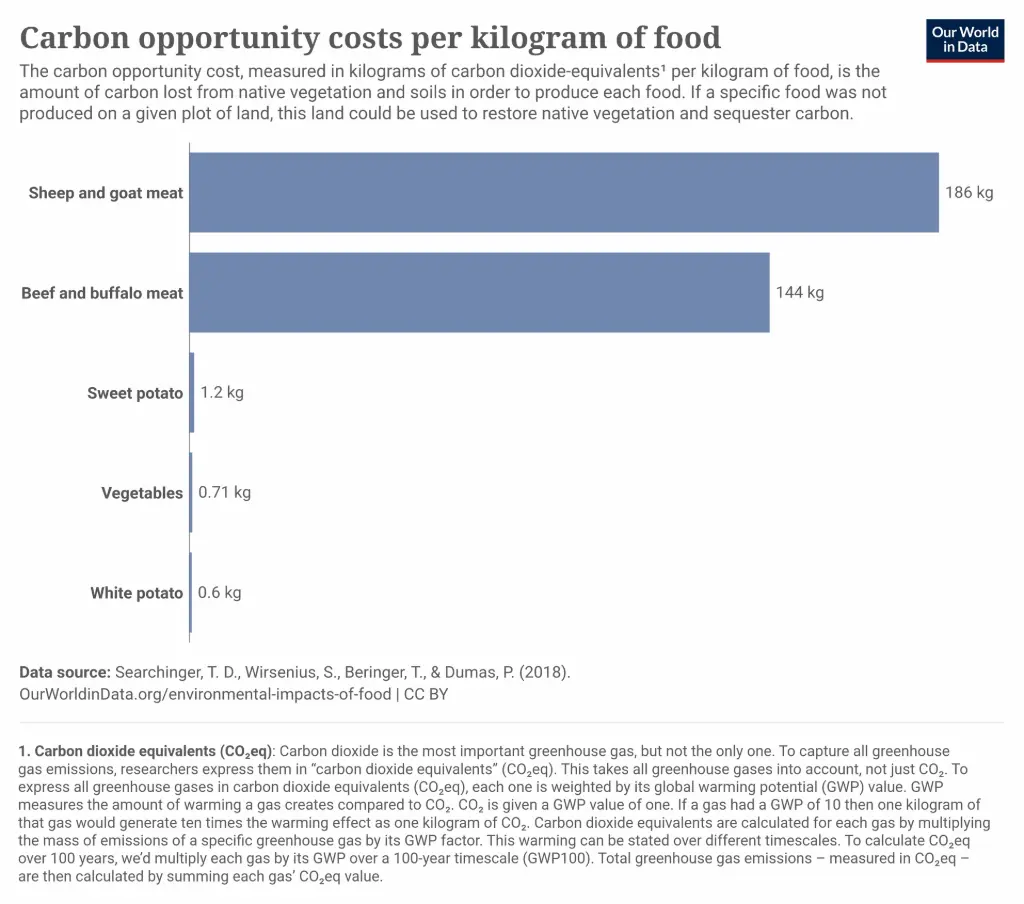
But wait, you might be thinking: "A kilogram of beef feeds me longer than a kilogram of potatoes!" You’re right, so scientists also calculated emissions per calorie and per protein.
Guess what? Beef is still the emissions champion.
Not All Meat is Created Equal
Here’s a twist: how we raise cattle makes a big difference.
The highest-impact beef emits 105 kg of CO2 per 100 grams of protein, while the lowest-impact beef emits only 9 kg. That’s a 10-fold difference!
But even the best beef still emits more than the worst plant-based food. It’s like comparing an economical sports car to a bicycle—the car still uses more gas.
The Myth of Local Food
Many people think buying local food is the solution to reducing emissions. Surprise!
Transportation and packaging together account for only about 11% of total food emissions. For beef, transportation accounts for just 0.5% to 2% of total emissions.
Here’s something that will blow your mind: most food transportation emissions occur in the last few miles when trucks deliver food to local markets.
International food transport usually happens on cargo ships, which are incredibly efficient. It’s like comparing a packed bus (the ship) to multiple individual cars (the trucks).
The Traveling Avocado Surprise
Brace yourself for this: a kilogram of avocado shipped from South America to Europe generates about 0.3 kg of CO2 in transport emissions and around 2.5 kg in total.
Meanwhile, a kilogram of local butcher’s beef will emit at least 18 kg of CO2.
It’s like the avocado hitching a ride on a rocket and still emitting less than the neighbor’s cow!
This means that, in most cases, plant-based foods transported long distances still cause fewer emissions than locally produced animal products.
It’s a reminder that when it comes to food emissions, what we eat is often more important than where it comes from.
The Cow's Burp: An Unexpected Villain
Most of beef’s emissions come directly from cow burps! Yes, you read that right.
These burps are full of methane, a gas that, while short-lived in the atmosphere, is a global warming supervillain.
Think of methane as that hyperactive friend who shows up at the party, causes chaos for a few hours, then leaves.
CO2, on the other hand, is like the guest who stays until the end and sleeps on your couch for centuries!
Together, these two have already caused between 23% and 40% of human-caused global warming.
Not All Cows Are the Same
 |
Here’s an interesting fact: 44% of the world’s beef comes from dairy cows! It’s like these cows have two jobs: producing milk and beef.
And there’s more: dairy cows usually receive better-quality feed, which makes them grow faster and emit less methane.
The Forests' Nightmare
Now, hold on tight: the worst villain in this story is deforestation to create farms.
When we clear a forest, we not only release the CO2 stored in the trees but also destroy the soil’s ability to store carbon in the future.
Farms that burn tropical forests to raise cattle, especially in Brazil, are the emissions champions.
The Soy Myth
Speaking of grains, let’s talk about soy.
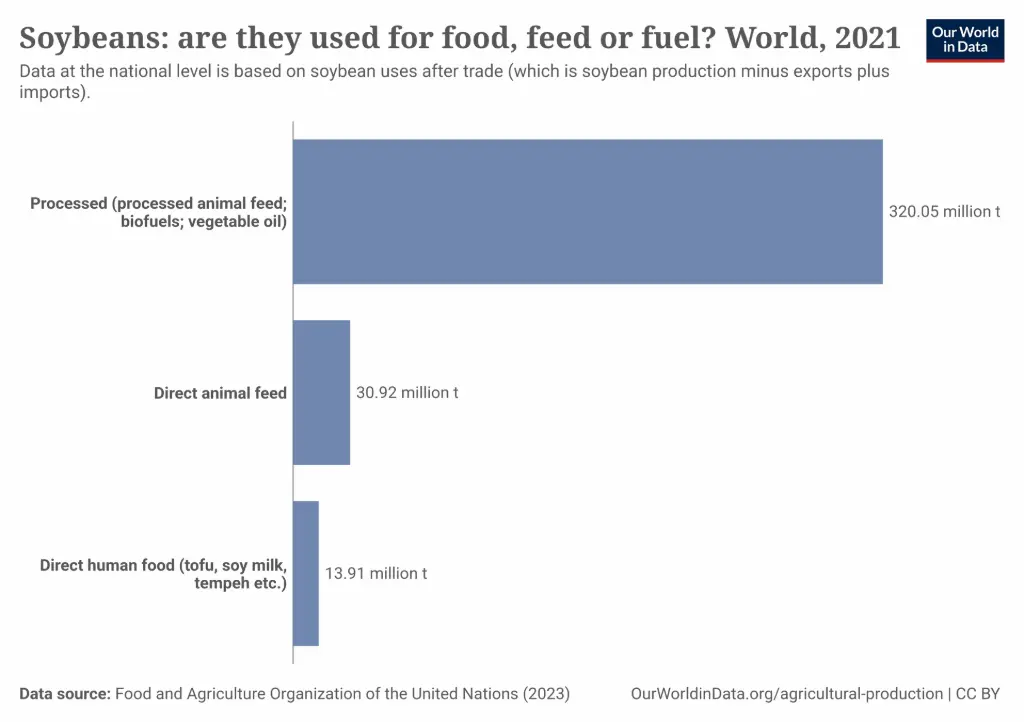
Many people think the deforestation of the Amazon for soy cultivation is the fault of vegans and their soy milk.
Only 19% of global soy production goes into human products. About 77% is used to feed animals.
It’s like we’re deforesting the Amazon to feed... our future meals!
The Power of Plants: A Green Diet
Get ready for this bombshell: if the whole world adopted a plant-based diet, we could reduce global agricultural land use from 4 to 1 billion hectares!
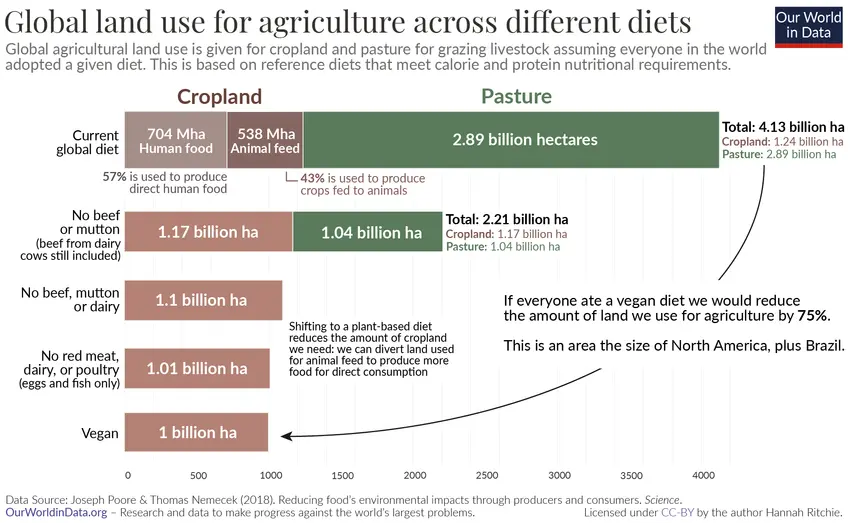
Imagine that: it’s like we could turn an area the size of South America into a giant nature reserve!
Remember that conversation about feeding animals with plants and then eating them?
Well, here's the trick.
By eating plants directly, we cut out the “middleman” (sorry, cows!) and avoid a huge loss of calories in the process.
Livestock waste a lot of energy and protein, but do produce more nutrient-dense protein sources
When you feed an animal, not all of this energy goes into producing additional meat, milk or eggs. Most is used to simply keep the animal alive.
Cereals fed to animals are not wasted: they are converted to meat and dairy, and consumed by humans in the end.
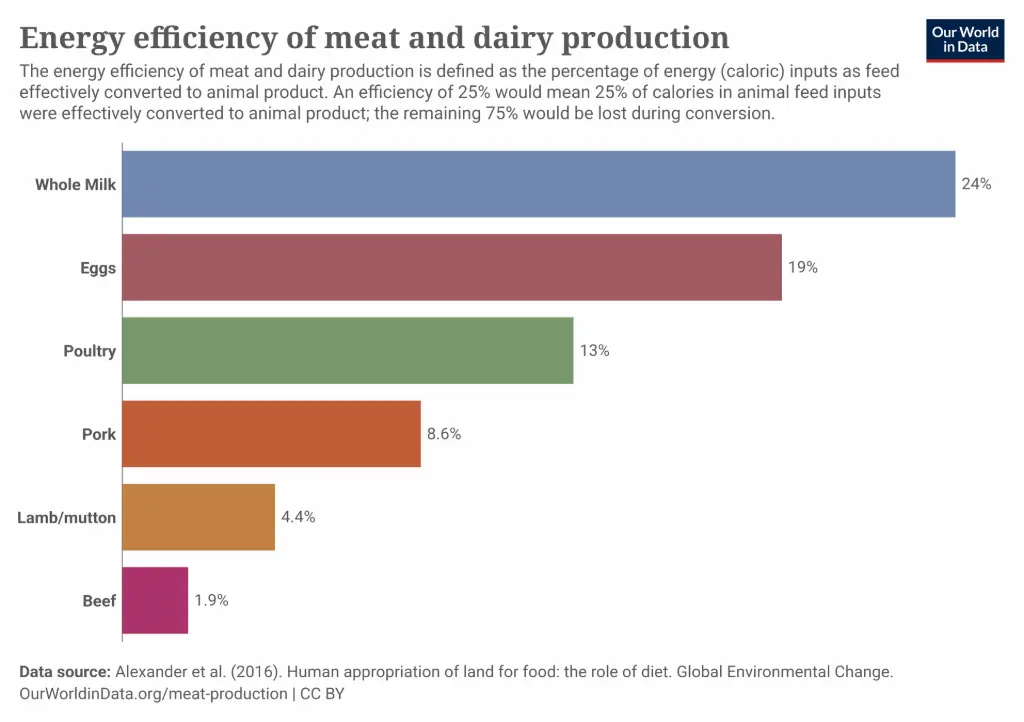
The Magic Numbers
Let’s do some quick math (promise it won’t hurt!).
Switching to a diet without animal products could:
- Reduce land use for food by 76%
- Cut greenhouse gas emissions from food in half
- Lower acidification by 50%
- Reduce eutrophication by 49%
- Save 19% of freshwater use
It’s like giving the planet a massive boost!
The Grand Finale: The Future is in Our Hands (and Plates!)
Phew! That was quite a journey, wasn’t it?
We’ve gone through cow burps, burning forests, ethical dilemmas, and even magic math. But the main message is clear: what we eat has a huge impact on our planet.
Now, we’re not saying everyone needs to go vegan overnight (although if you want to, go ahead!).
But how about starting with small changes?
Remember: every bite is a choice.
And with the information you have now, you can make choices that are good not just for you but for the whole planet!
Bibliography
This post was based on information from the following reliable and openly reusable sources:
- Hannah Ritchie and Max Roser (2019) - “Land Use” Published online at OurWorldinData.org. Retrieved from: https://ourworldindata.org/land-use
- How to Sustainably Feed 10 Billion People by 2050, in 21 Charts - World Resources Institute
- Hannah Ritchie (2021) - “If the world adopted a plant-based diet, we would reduce global agricultural land use from 4 to 1 billion hectares” Published online at OurWorldinData.org. Retrieved from: 'https://ourworldindata.org/land-use-diets' [Online Resource]
